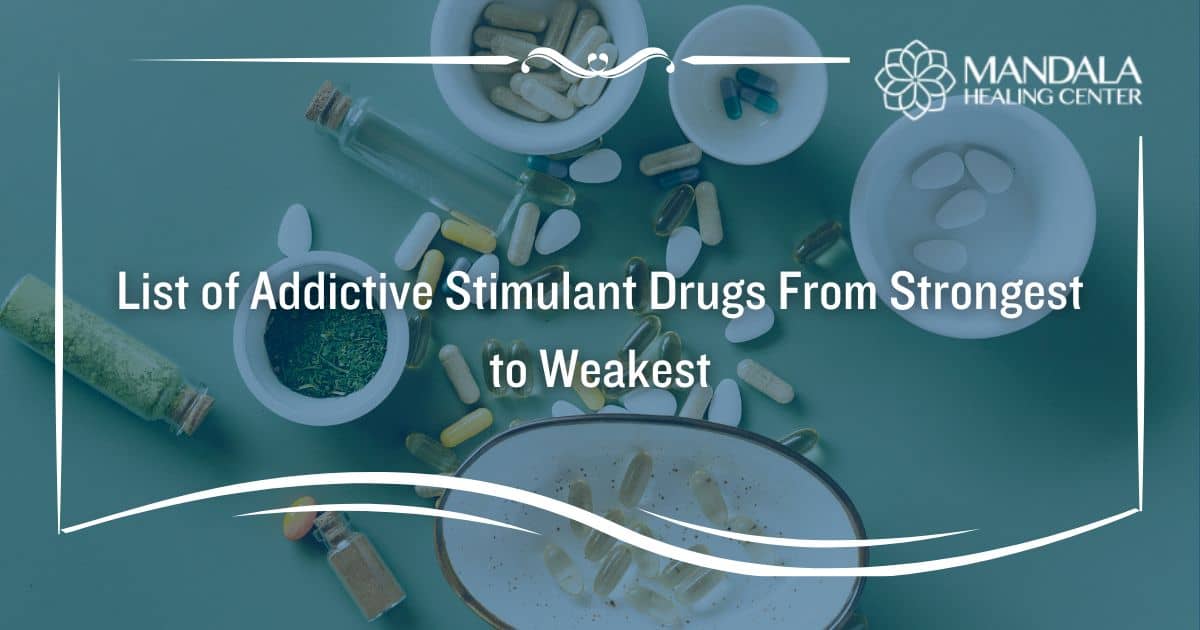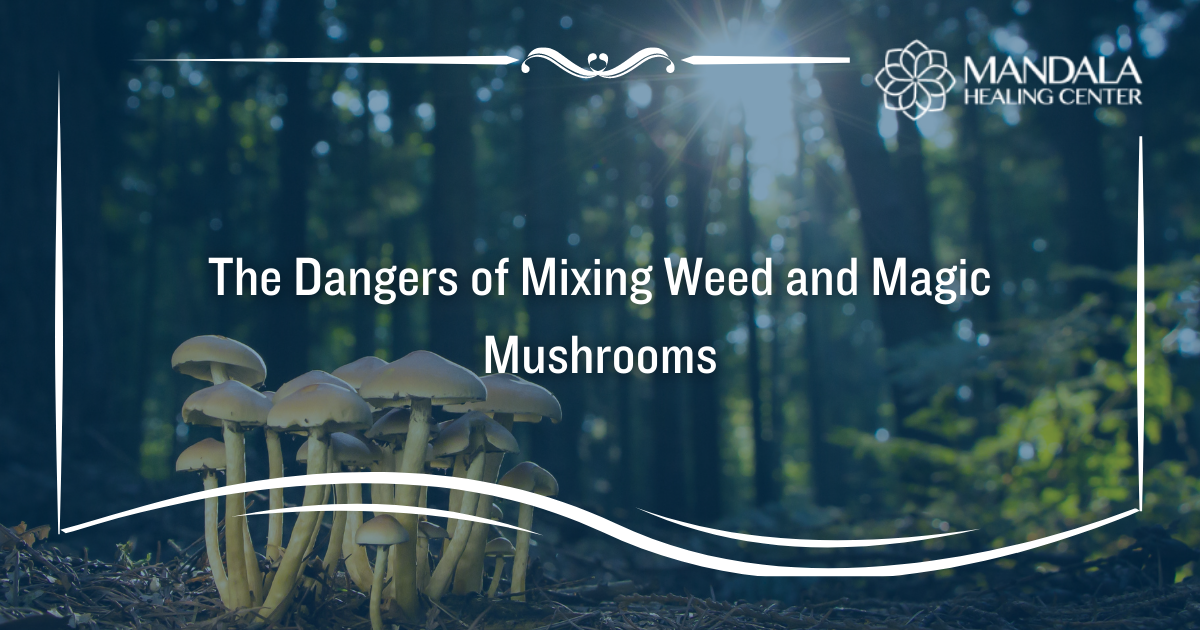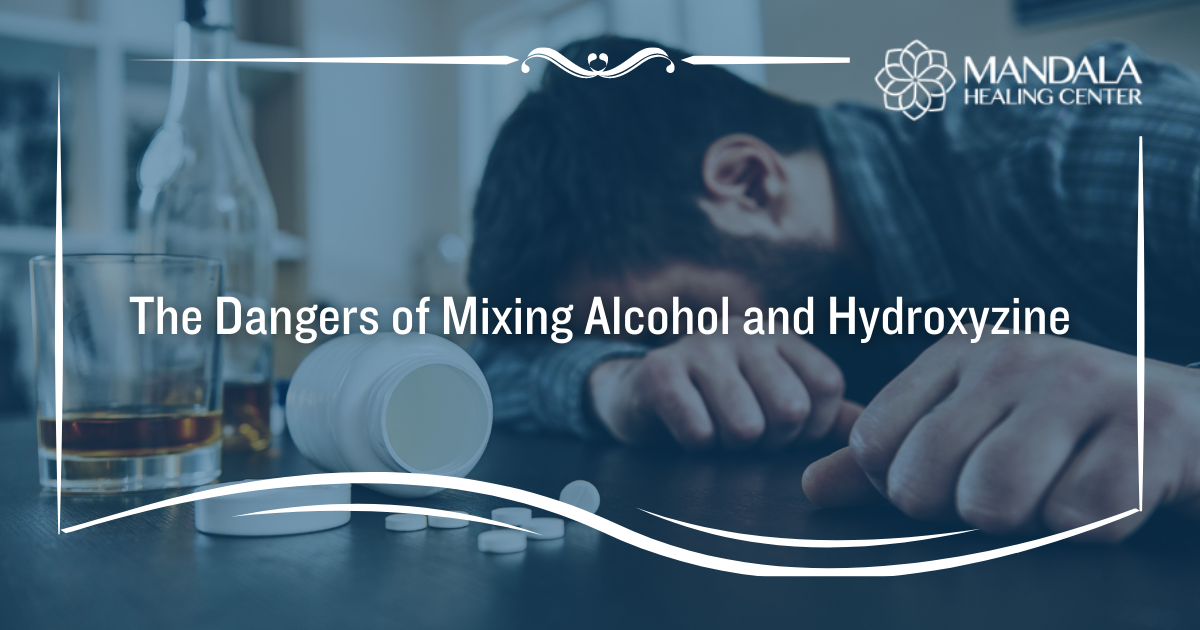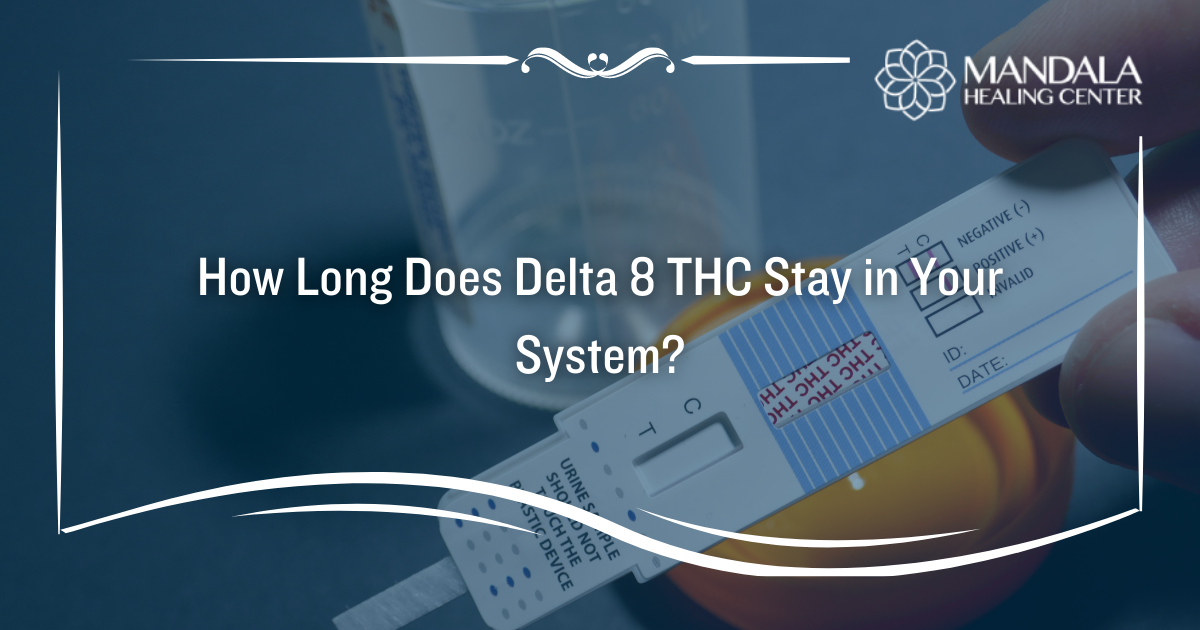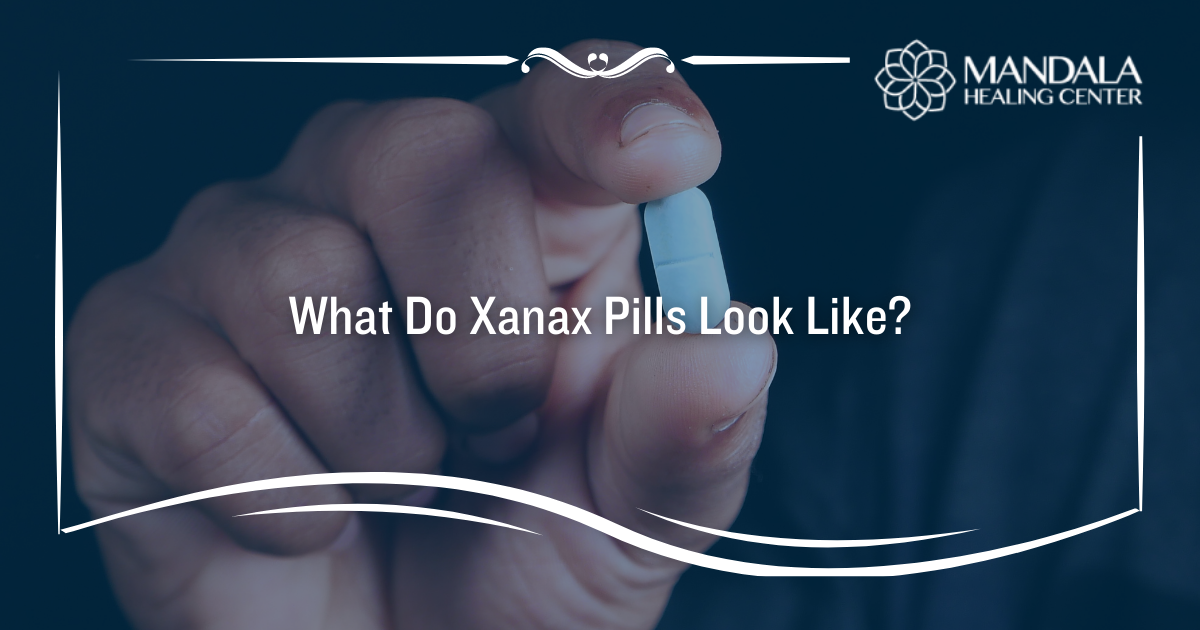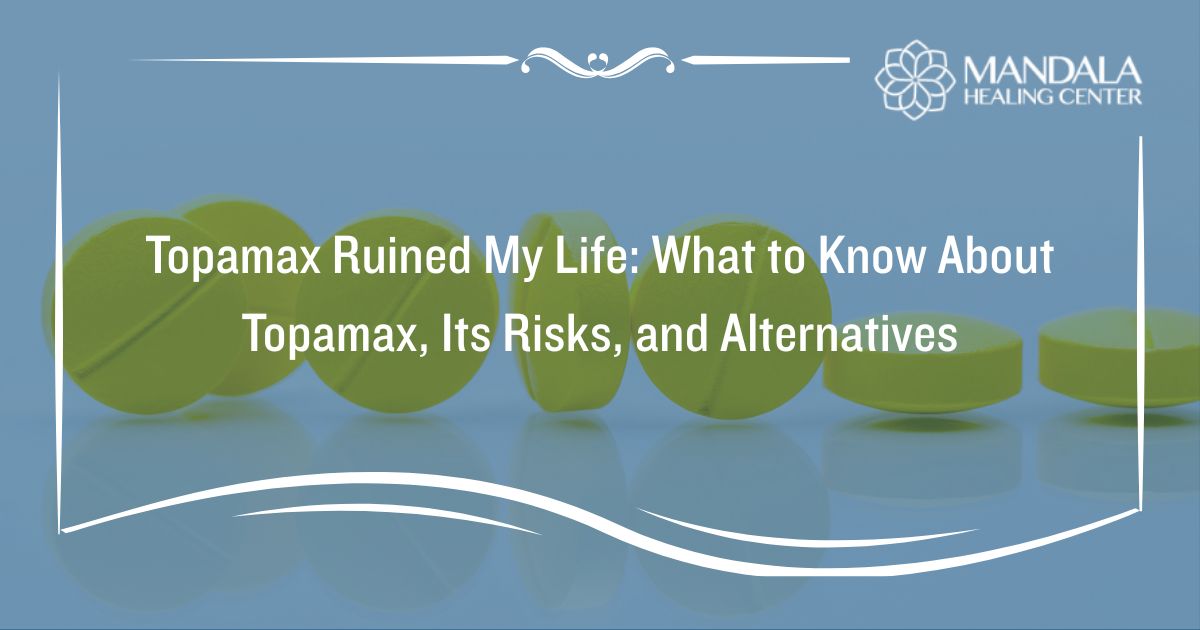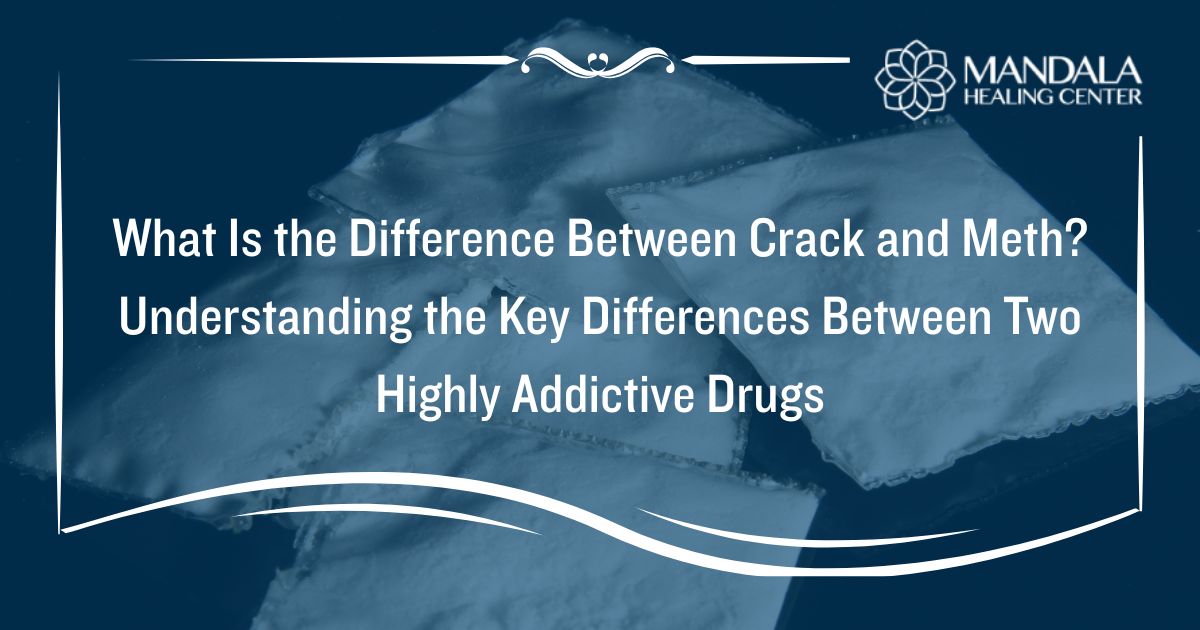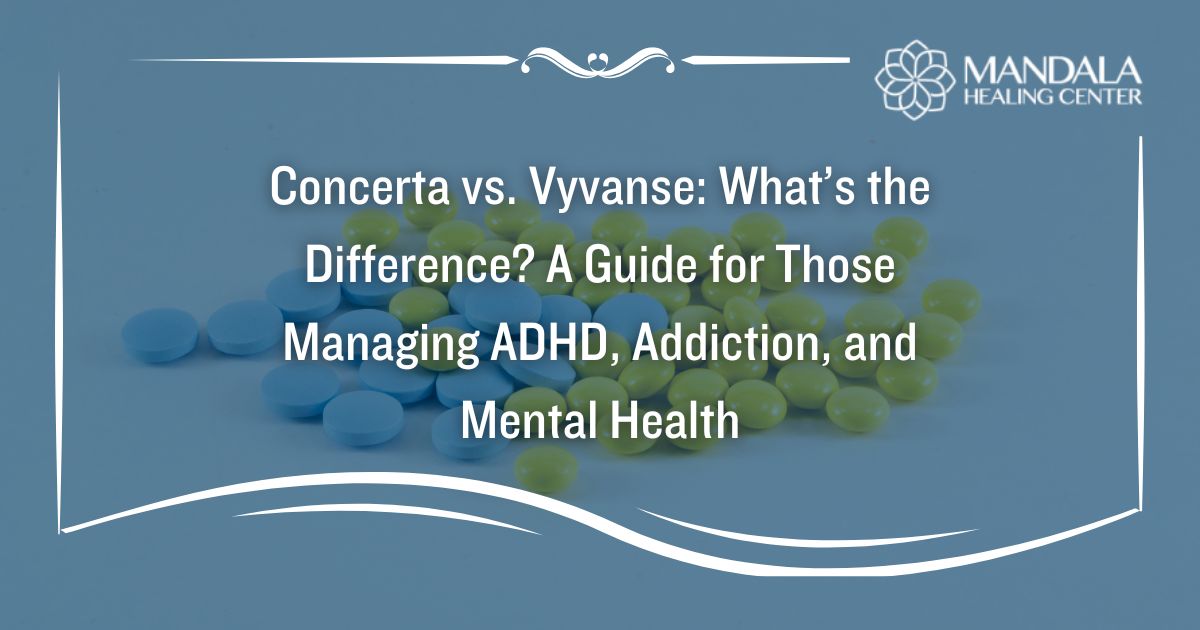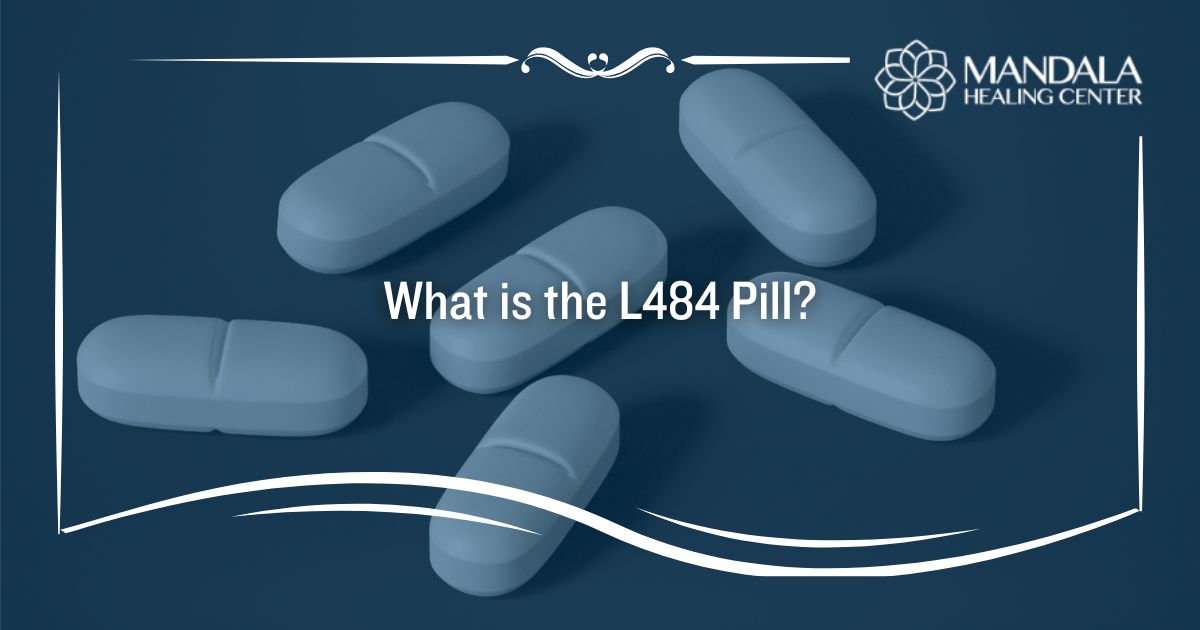Addiction to any type of substance can lead to an array of adverse effects, including the development of physical and mental health conditions. However, stimulant substances are one of the most commonly abused drugs, next to opioids and alcohol. According to the National Institute of Drug Abuse, stimulant drugs were responsible for 32,537 overdose deaths in 2021.[1]
Stimulant drugs are a category of both prescription and illicit substances. You can become addicted to prescription stimulants like Adderall and illicit stimulants like methamphetamine.
Some stimulants are stronger than others. The following is a list of addictive stimulant drugs from strongest to weakest.
1. Methamphetamine
Methamphetamine (meth) is the most potent stimulant drug known to man. While this substance is available by prescription for the treatment of attention deficit hyperactivity disorder (ADHD) and weight loss, most people abuse illicit forms of it.
According to the National Institute of Drug Abuse, “Among people aged 12 or older in 2021, 0.9% (or about 2.5 million people) reported using methamphetamine in the past 12 months.”[2]
Many people who abuse meth become addicted to it after one or two uses because meth causes a surge of dopamine in your brain, causing your body to crave it in order to feel a sense of pleasure and reward. The effects of meth can last from 12 to 14 hours after one single use, making it extremely potent and long-lasting when compared to other stimulant drugs.
Long-term meth abuse can result in the following:[3]
- Severe dental decay
- Aggressive behavior
- Paranoia and delusions
- Heart and lung damage
- Weight loss and malnutrition
- Skin sores
2. Cocaine and Crack Cocaine
Cocaine is the second most potent stimulant drug. Cocaine comes from coca leaves that are found in South America. According to the National Institute of Drug Abuse (NIDA), “Among people aged 12 or older in 2021, 1.7% (or about 4.8 million people) reported using cocaine in the past 12 months.”[4]
Cocaine can also be converted into crack cocaine. Crack cocaine is created by dissolving powdered cocaine in a mixture of water and ammonia or baking soda. Once this mixture is boiled, the powdered cocaine turns into hard rocks, which is how crack cocaine got its name.
While crack cocaine has a worse reputation, both substances are equally as dangerous. The long-term risks of using either of these drugs include:[5]
- Headaches
- Mood changes
- Sexual dysfunction
- Seizures and strokes
- Heart disease and heart attack
- Lung damage
- Loss of smell, nosebleeds, and difficulty swallowing from snorting
- Bowel decay from swallowing the substances
- HIV or hepatitis from injecting it
3. Amphetamines
Amphetamines are psychostimulant drugs that speed up messages between the brain and the body. There are both illicit and prescription versions of amphetamine substances. Prescription amphetamines may be used to treat obesity, narcolepsy, and ADHD.[6] Since these substances are addictive, someone taking a prescription amphetamine long-term could develop a substance use disorder.
If you abuse amphetamines long-term, you could deal with the following adverse health effects:
- Anxiety and paranoia
- Significant weight loss and malnutrition
- Excessive sweating
- Muscle loss
- Insomnia
- Tics
- Hallucinations and delusions
4. Prescription Stimulants for ADHD
Prescription stimulants are medications used to treat attention-deficit hyperactivity disorder (ADHD). Sometimes these substances are used to treat obesity and narcolepsy on a short-term basis. Because prescription stimulants can cause a euphoric and energetic high, some people abuse them.
Common types of prescription stimulants include:[7]
- Dextroamphetamine (Dexedrine)
- dextroamphetamine/amphetamine (Adderall)
- Methylphenidate (Concerta and Ritalin)
Long-term prescription stimulant abuse can lead to a variety of adverse health effects, including seizures, heart attacks, and stroke. Additionally, if you take too much of a prescription stimulant you could suffer a fatal overdose.
5. Ecstasy (MDMA or Molly)
One of the weakest stimulant drugs is ecstasy. Sometimes referred to as MDMA or Molly, ecstasy is still habit-forming despite being less potent than other stimulants like meth. Ecstasy can cause heightened senses of pleasure, euphoria, sexual desire, and slight hallucinogenic effects.
While MDMA can cause pleasurable effects, it is still dangerous to abuse. The risks of long-term molly abuse include:[8]
- Tachycardia
- Blood clots
- Heart attack
- Stroke
- Damage to your kidneys
6. Phentermine
Phentermine is a prescription weight-loss medication that acts as an appetite suppressant. While it is intended for short-term use under medical supervision, misuse can lead to dependency and health complications.
7. Nicotine
Nicotine, found in tobacco products, is a highly addictive stimulant, but it is weaker than the stimulants listed above. Smoking or vaping tobacco delivers nicotine to the brain rapidly, causing a temporary sense of relaxation and pleasure. However, nicotine addiction is a serious concern and can lead to various health problems, including respiratory issues and heart disease.
Find Help for Stimulant Abuse and Addiction
If you or a loved one are addicted to a stimulant, it’s time to seek help. Stimulant drugs like meth, cocaine, crack, or Adderall can lead to long-term health problems and life-threatening emergencies like overdoses. As a result, you should always seek support from a professional drug rehab center.
To learn more about our stimulant addiction treatment programs, contact Mandala Healing Center today.
References:
- The National Institute of Drug Abuse (NIDA): Drug Overdose Death Rates, Retrieved August 2023 From https://nida.nih.gov/research-topics/trends-statistics/overdose-death-rates
- The National Institute of Drug Abuse (NIDA): What is the scope of methamphetamine use in the United States, Retrieved August 2023 From https://nida.nih.gov/publications/research-reports/methamphetamine/what-scope-methamphetamine-misuse-in-united-states
- The National Institute of Drug Abuse (NIDA): What are the long-term effects of methamphetamine use, Retrieved August 2023 From https://nida.nih.gov/publications/research-reports/methamphetamine/what-are-long-term-effects-methamphetamine-misuse
- The National Institute of Drug Abuse (NIDA): What is the scope of cocaine use in the United States, Retrieved August 2023 From https://nida.nih.gov/publications/research-reports/cocaine/what-scope-cocaine-use-in-united-states
- The National Institute of Drug Abuse (NIDA): What are the long-term effects of cocaine use, Retrieved August 2023 From https://nida.nih.gov/publications/research-reports/cocaine/what-are-long-term-effects-cocaine-use
- The National Library of Medicine (NLM): Amphetamine, Retrieved August 2023 From https://www.ncbi.nlm.nih.gov/books/NBK556103/
- The National Institute of Drug Abuse (NIDA): Prescription Stimulants, Retrieved August 2023 From https://nida.nih.gov/publications/drugfacts/prescription-stimulants
- The National Institute of Drug Abuse (NIDA): MDMA (Ecstasy/Molly) DrugFacts, Retrieved August 2023 From https://nida.nih.gov/publications/drugfacts/mdma-ecstasymolly


